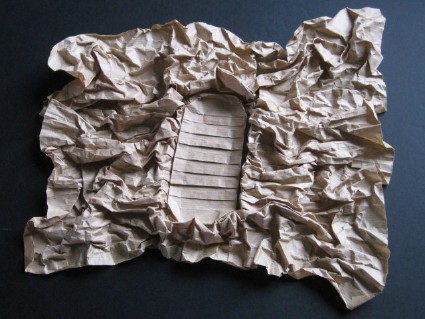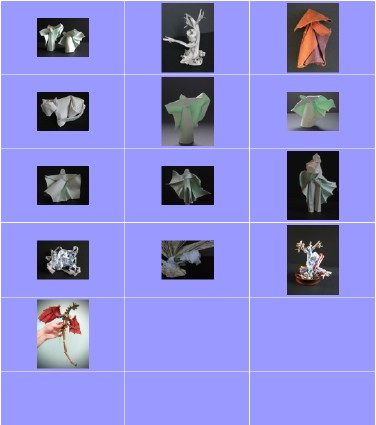
 | Welcome on MOOC-invitation |
|
| New! | An invitation to practice origami | map | Discovery of the world of folding paper From origami to the Art of Folding Paper |
| Back MOOC1 | Journey 2 | Sequence 1 | <--- page 3 | page 4 | page 5---> |
 |
Modelling |
| The base of the folding of paper is, today still, the fold joining two given points, that is to say a segment of line. A complete folding is then formed of a greater or lesser quantity of straight segments, which our visual system records and classifies as a set of geometrical aspect. This does not prevent the result from being aesthetically pleasing, and for a very long time origami has been dealing with these straight segments, a beautiful folding being a fold whose folds were perfect, i. e. straitght ones. However, if our environment (for example urban) is filled with straight lines, curved lines are also ubiquitous and offer their intrinsic beauty. The rigidity of straight lines is often contrasted with the fluidity of curved lines, synonymous with movement. Gradually, origamists began to introduce curved lines or left surfaces into their models. Three ways have been explored: - The work of the shutters to give them a more rounded shape, by pinching, pressure, sometimes slightly moistening the shutters. - paper sculpture using wet folding ( Joszef Szebe , Giang Dinh , Paperclip , Sébastien Limet ). Wet folding requires the use of fairly strong paper (often Canson 200 g at least) and generates a multitude of techniques more or less learned to retain and fix the wet form until final drying. Look for example, at the bottom of this page, the photo of the model Smaug 4.0 by Tim Rickman. Notice the wire framing before MC shaping. - the use of curved folds ( Jun Mitani , Ekaterina Lukasheva a bit long to load), which also requires the use of fairly strong paper. The almost systematic use of modeling has been a revolution. The models have acquired more life, more expression. But there is a flip side to the coin: it is (relatively!) Simple to bend right-hand segments in a straight-line diagram, as much as to create a shape in one hand, in a snap, in a pressure is difficult to teach and pass in the current folding. There are now books that, in addition to the level of difficulty of folding, offer a note of modeling expressing the importance of modeling to the final appearance. There are thus doublets (***** very difficult ** little modeling) or (** easy ***** modeling difficult). For an example, watch the video The Process of Making an Origami Rooster , demonstrated by Trung Dong. |
13 photo(s)